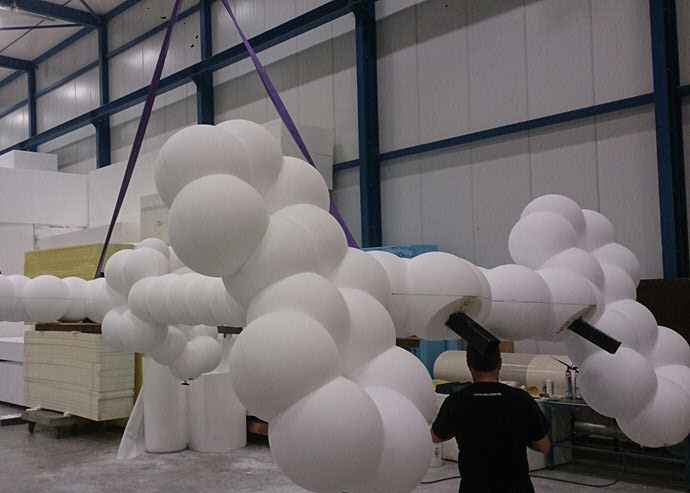The nanocar is a molecule designed in 2005 at Rice University by a group headed by Professor James Tour. The molecule consists of an H-shaped ‘chassis’ with fullerene groups attached at the four corners to act as wheels.
According to Professor Tour – Rice University, this development is a watershed in so far as constructing successfully a nanocar represents the first step toward molecular manufacturing. Professor Tour avers: “It’s the beginning of learning how to manipulate things at the nanolevel in nonbiological systems.”
The nanocar consists of a chassis and axles made of well-defined organic groups with pivoting suspension and freely rotating axles. The wheels are buckyballs, spheres of pure carbon containing 60 atoms apiece. The entire car measures just 3-4 nanometers across, making it slightly wider than a strand of DNA. A human hair, by comparison, is about 80,000 nanometers in diameter.
When dispersed on a gold surface, the molecules attach themselves to the surface via their fullerene groups and are detected via scanning tunneling microscopy.
University of Groning’s ‘Molecular motor’, is a light-driven rotating molecule, is widely recognized as a world-class breakthrough. The potential applications of this concept are as numerous as they are spectacular. The idea that molecular motors can transport themselves through the bloodstream in order to deliver drugs to previously unreachable locations in the human body with a high degree of accuracy is particularly inspiring. It is partly thanks to Feringa that the University of Groningen is undisputedly Europe’s number one in the field of chemistry.
Three scientists won the Nobel Prize in Chemsitry for their developing the world’s smallest machine. 1000 times smaller than a human hair Jean-Pierre Sauvage, University of Strasbourg, France; Sir J. Fraser Stoddart, Northwestern University, Evanston, IL, USA; Bernard L. Feringa, University of Groningen, the Netherlands –“for the design and synthesis of molecular machines”.

Upon heating the surface to 200 °C the molecules move forward and back as they roll on their fullerene “wheels”. The nanocar is able to roll about due to the fact that the fullerene wheel is fitted to the alkyne “axle” through a carbon-carbon single bond. The hydrogen on the neighboring carbon is no great obstacle to free rotation. When the temperature is high enough, the four carbon-carbon bonds rotate and the car rolls about. Occasionally the direction of movement changes as the molecule pivots. The rolling action was confirmed by Professor Kevin Kelly, also at Rice, by pulling the molecule with the tip of the STM microscope.
A future nanocar with a Synthetic molecular motor has been developed by Jean-Francois Morin et al. “En route to a motorised nanocar” Abstract. It is fitted with carborane wheels and a light powered helicene synthetic molecular motor. Although the motor moiety displayed unidirectional rotation in solution, light-driven motion on a surface has yet to be observed. Motility in water and other liquids can be also realized by a molecular propeller in the future.
